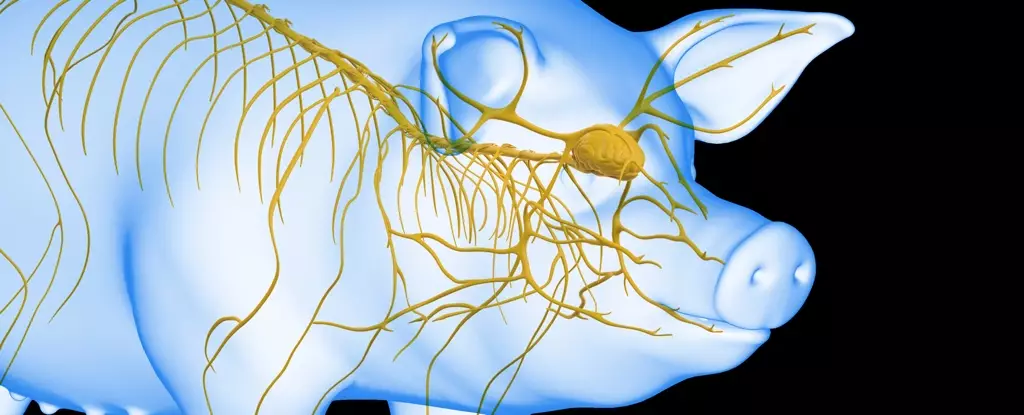A groundbreaking study led by Chinese researchers has yielded shocking revelations about resuscitating brain activity in pigs after cardiac arrest has occurred. For nearly an hour after blood circulation has stopped, the team demonstrated that brain activity could be revived, and in some instances, maintained for several hours. This study signifies a pivotal advancement in the quest to enhance survival chances and brain recovery for cardiac arrest patients, suggesting that the critical time frame for resuscitation might be extended significantly.
The conventional understanding of cardiac arrest has always emphasized the urgency of immediate intervention. Typically, the prospect of brain damage due to loss of blood flow creates a minimal window for effective resuscitation. The research team at Sun Yat-Sen University, supervised by physician Xiaoshun He, examined the potential role of the liver—an organ crucial for blood purification—within their life-supporting system. This innovative approach could ultimately reshape treatment protocols for patients suffering from cardiac arrest.
To fully grasp the implications of this research, one must understand the dynamics of ischemia, particularly in the brain. Sudden cardiac arrest leads to critical problems due to an abrupt cessation of blood flow, resulting in ischemia that can cause irreversible brain damage within minutes. Current medical guidelines emphasize the necessity of rapid resuscitation to minimize damage during this window.
While it has been established that overall organ ischemia impacts brain recovery, the specific roles of individual organs remained largely unexplored. By utilizing pig models—known for their physiological similarities to humans—researchers embarked on a journey to unveil the liver’s potential influence on brain recovery after such trauma.
The investigation involved 17 Tibetan minipigs subjected to controlled experiments assessing the impact of liver ischemia alongside brain ischemia. Two groups were deprived of blood flow to their brains for 30 minutes; one group also experienced liver ischemia, while the other did not, ensuring further analysis could take place post-euthanasia. A control group without ischemia provided baseline data for comparison.
As expected, the brains of the control group exhibited minimal damage. Interestingly, the group that suffered only brain ischemia demonstrated significantly less damage than the one which experienced both liver and brain ischemia. This finding set the stage for further exploration into the contributions of the liver during brain recovery efforts.
In the advanced phase of their experiments, researchers sought to integrate a healthy liver within a life-support system designed to revive an isolated brain. This arrangement could be a less likely treatment modality for humans but serves invaluable purposes in widening the understanding of resuscitation potentials.
The experimental apparatus employed an artificial heart and lung setup to circulate fluids, with one group benefitting from an integrated pig liver—a method called liver-assisted brain normothermic machine perfusion. Researchers’ primary goal was to connect the brains to this life-support apparatus at different intervals post-loss of blood circulation.
Initial results indicated that when connected within ten minutes, brain activity was observable, while without the liver’s inclusion, electrical activity was fleeting, disappearing after a half-hour. Of all intervals assessed, the 50-minute window proved most promising, where the brain displayed revitalized electrical activity lasting for six hours under the liver-assisted system, illuminating a potentially critical timeline for resuscitation.
The research conclusions underscore the liver’s critical role in facilitating brain recovery following cardiac arrest. Observations noted that even after prolonged periods of oxygen deprivation, some level of brain activity could be restored with the aid of liver involvement, reinforcing the necessity of multi-organ functionality in survival scenarios.
This revolutionary work opens new avenues for academic inquiry aimed at understanding brain injury mechanisms, offering hope for improved outcomes in human patients. As examination of this phenomenon continues, the team’s insights may lead to refined resuscitation techniques that could someday save numerous lives.
In a field where time is of the essence, any extension of the resuscitation window could be revolutionary, possibly altering the emergency response landscape significantly. As research progresses, the potential of these findings not only indicates improvements for survival rates but also raises essential questions about multi-organ management during critical medical interventions.


Leave a Reply